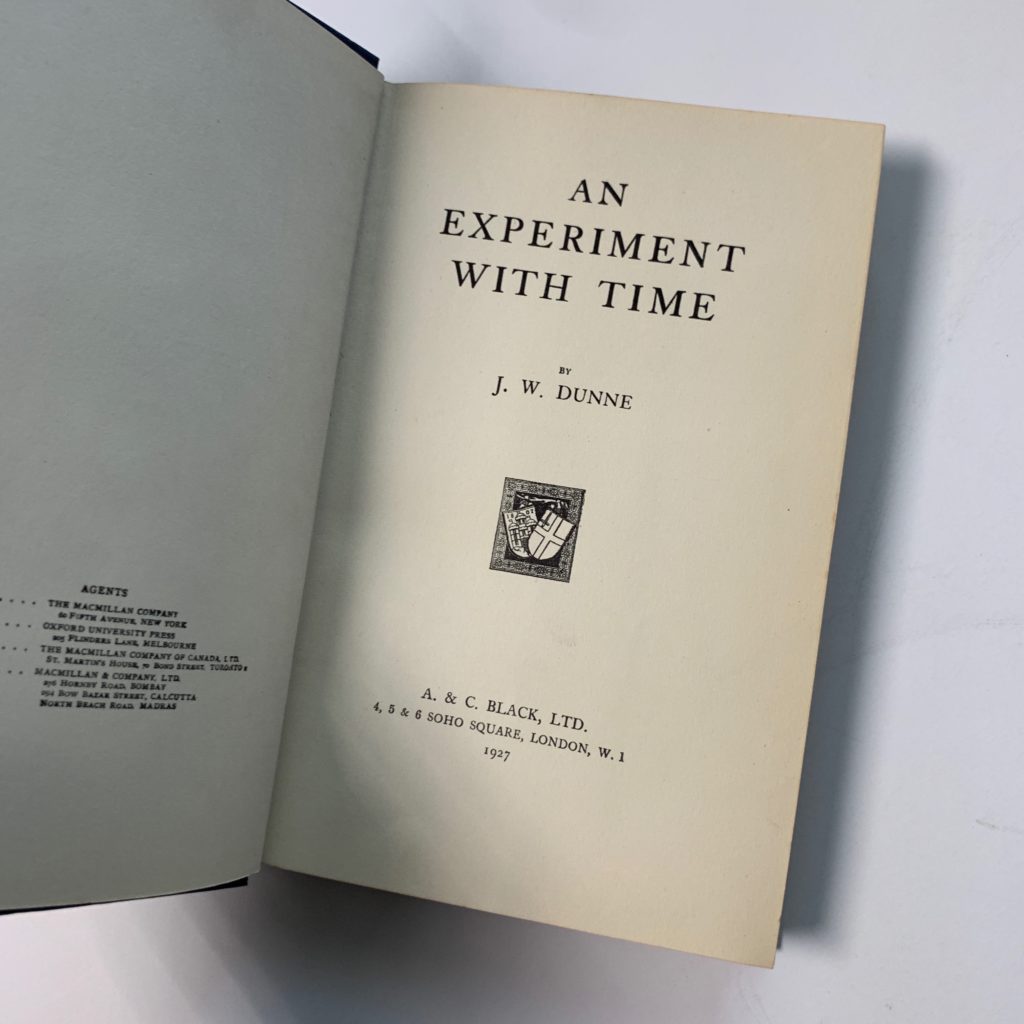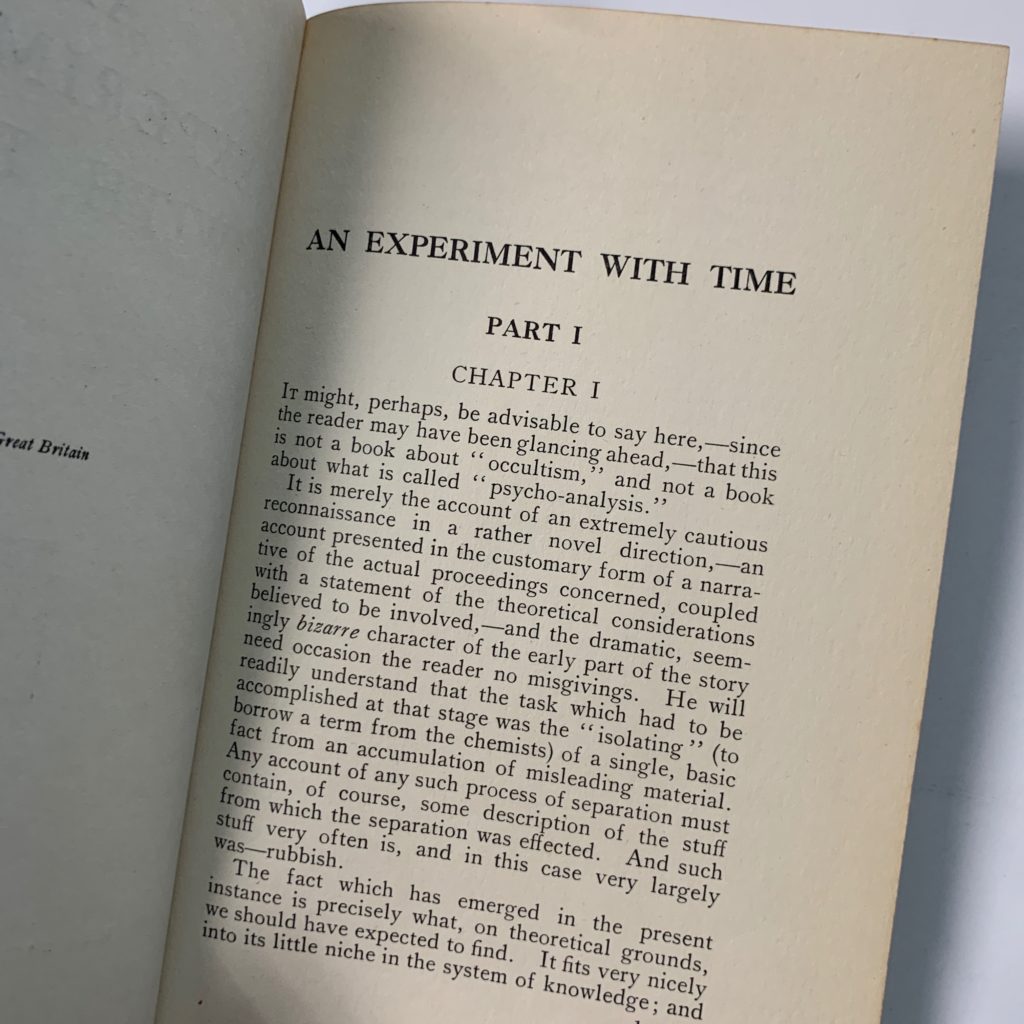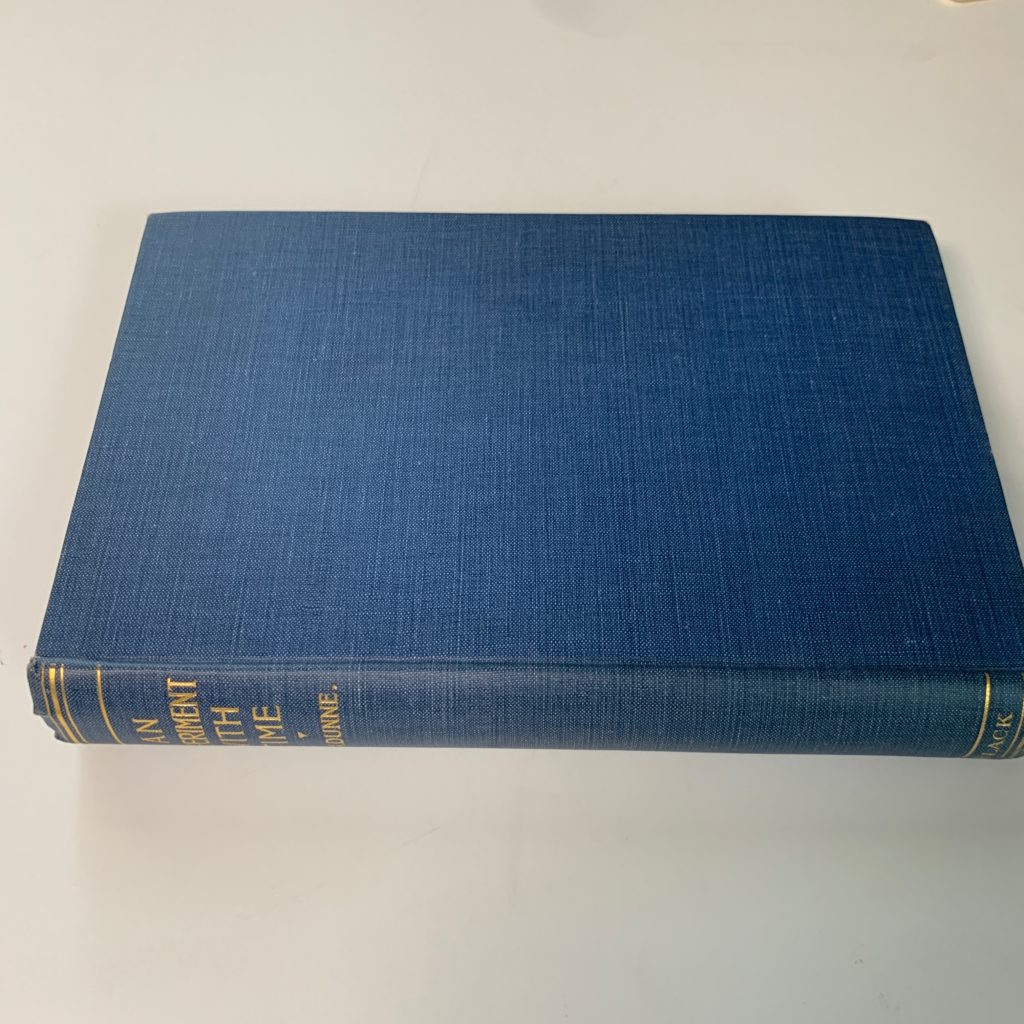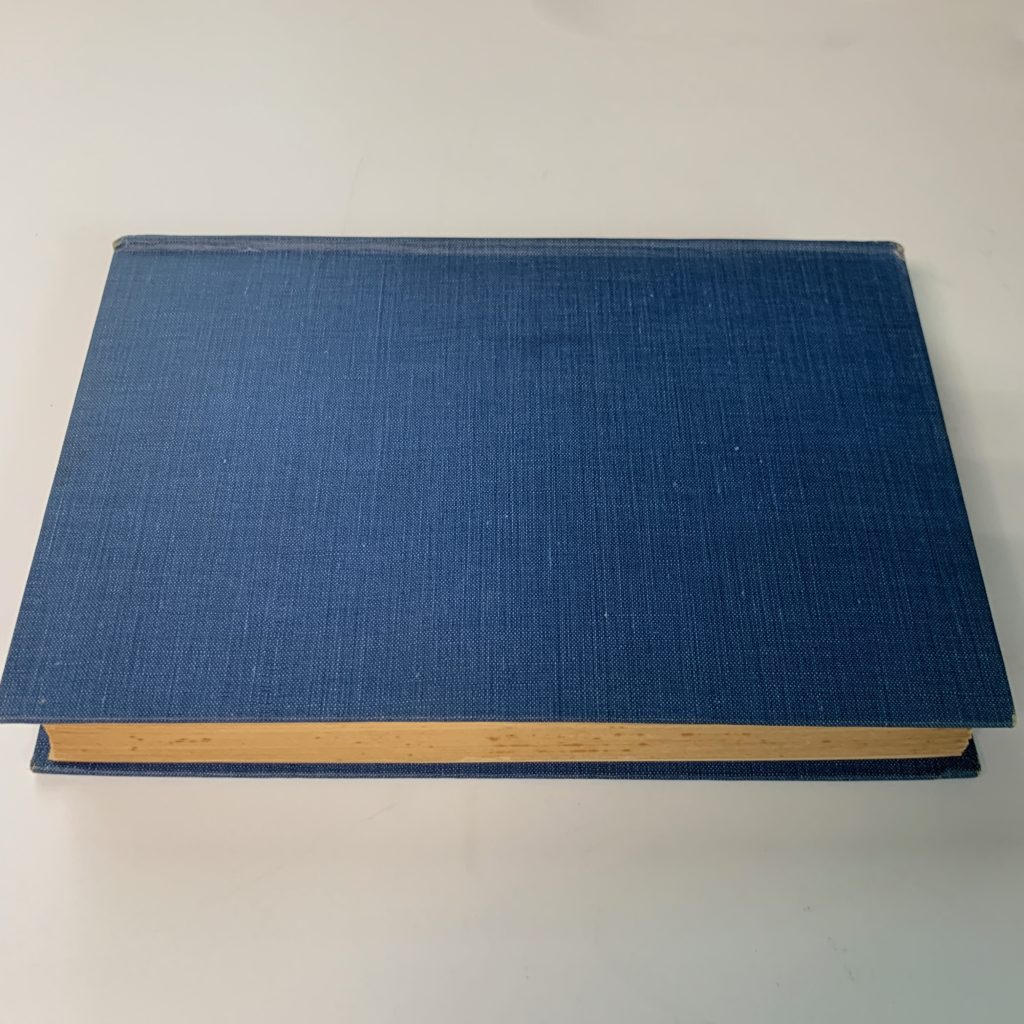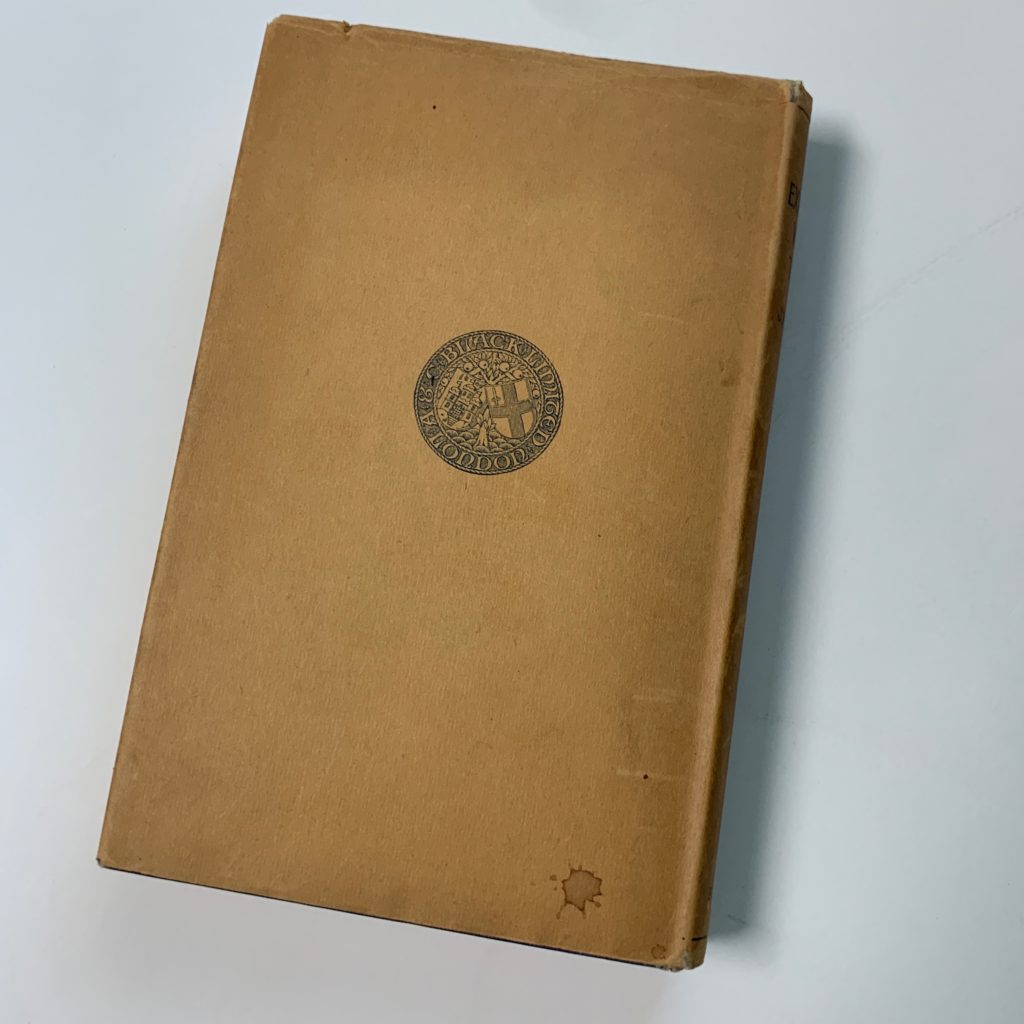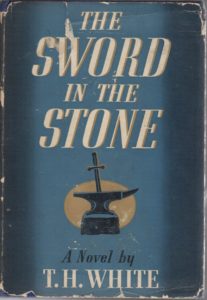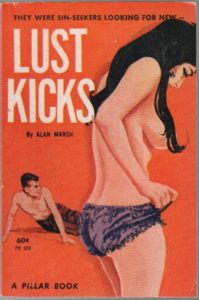53. [Beat Influence]. DUNNE, J. W. AN EXPERIMENT WITH TIME.
$600
First edition of the book J.B. Priestley called “one of the most fascinating, most curious, and perhaps the most important books of this age.” A nearly-forgotten but disproportionally influential title in which Dunne posits that all time is essentially happening simultaneously. Though based heavily on the author’s dream life, he is quick to argue that the book is scientific in nature, and its ideas would go on to impact the works of writers as diverse as Jorge Luis Borges, John Buchan, H.G. Wells, Graham Greene, James Hilton, Buckminster Fuller, Vladimir Nabokov, T.S. Eliot, Aldous Huxley, Robert Heinlein, C.S. Lewis, and perhaps most importantly William S. Burroughs, whose artistic practice was in many ways infused with Dunne:
“Years ago I read a book by John Dunne called An Experiment with Time (1924). Dunne was an English physicist, and he observed that his dreams referred not only to past but also to future events. However the future material, since it often seems trivial and irrelevant will not be remembered unless it is written down, and I have done this for about forty years. I began writing dreams down long before I started to write […] at least forty percent of my material derives from dreams” (“The Technology of Writing” from THE ADDING MACHINE).
More recently, a 1998 letter to the New York Times, mathematician Marc Groz noted that physicist Stephen Hawking’s concept of “imaginary time” was presaged by Dunne. The first edition is very uncommon, especially in dust wrapper.

![53. [Beat Influence]. DUNNE, J. W. AN EXPERIMENT WITH TIME. Image](http://catalogue15.briancassidy.net/wp-content/uploads/2019/05/22573-1024x1024.jpg)
